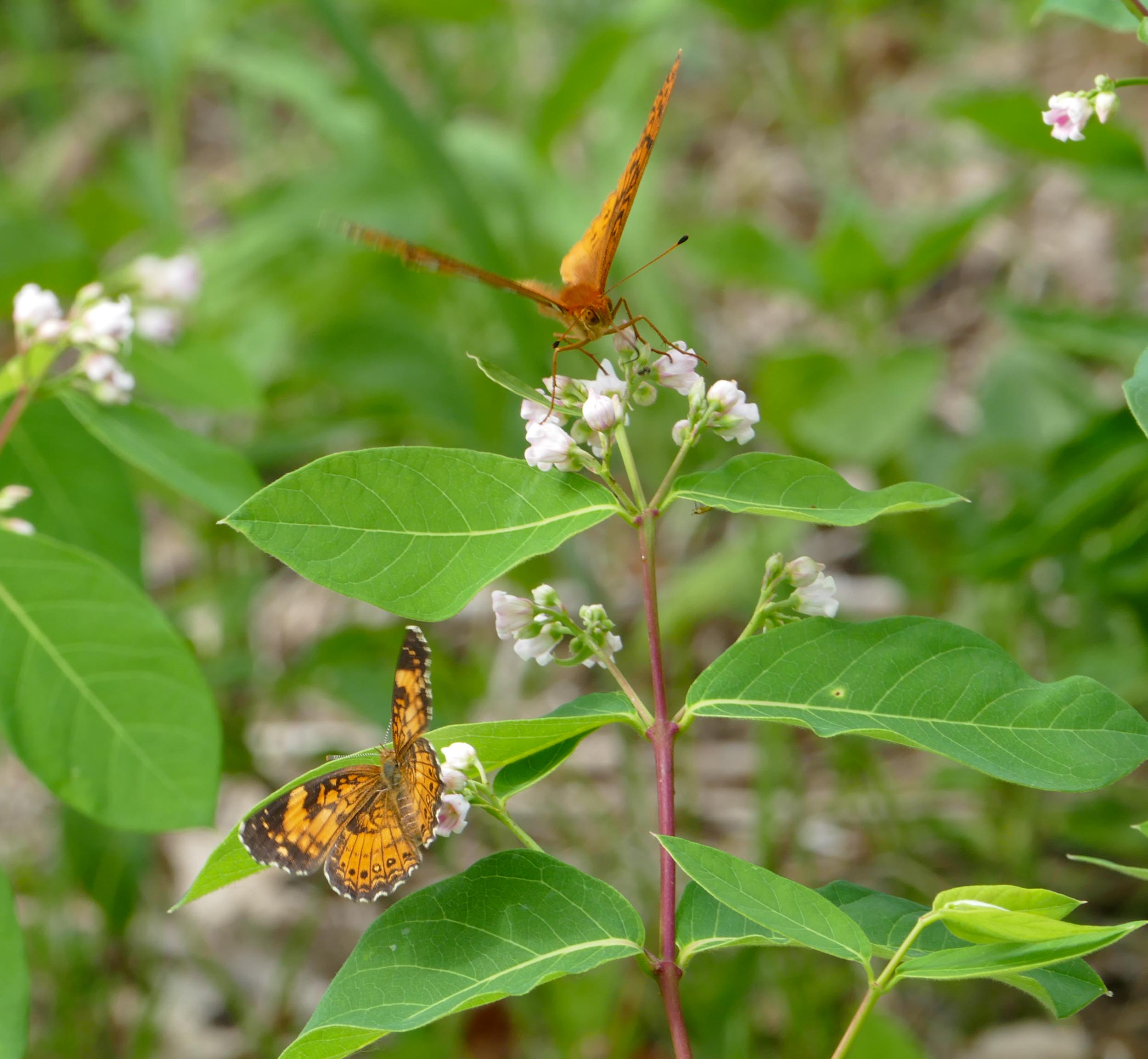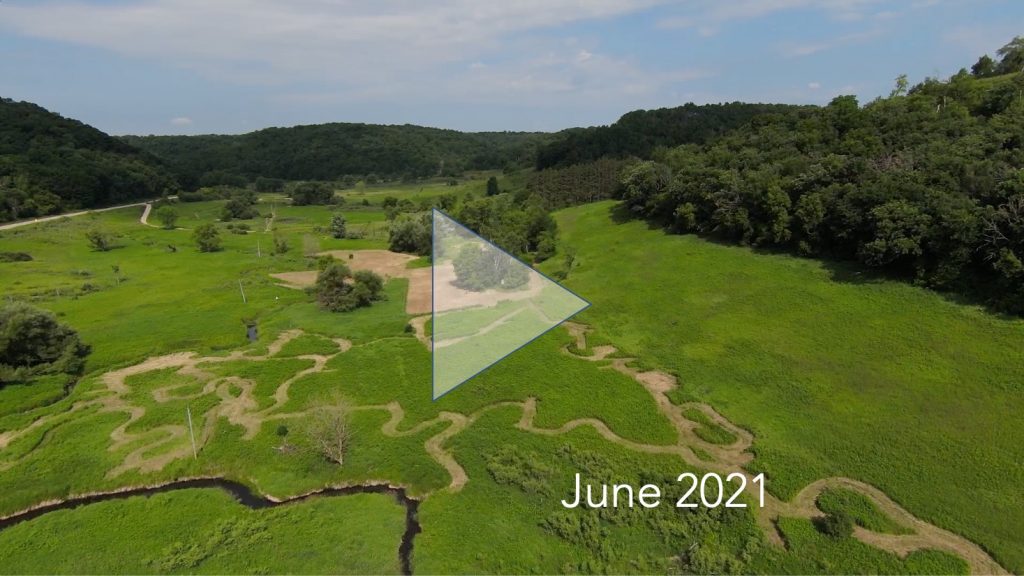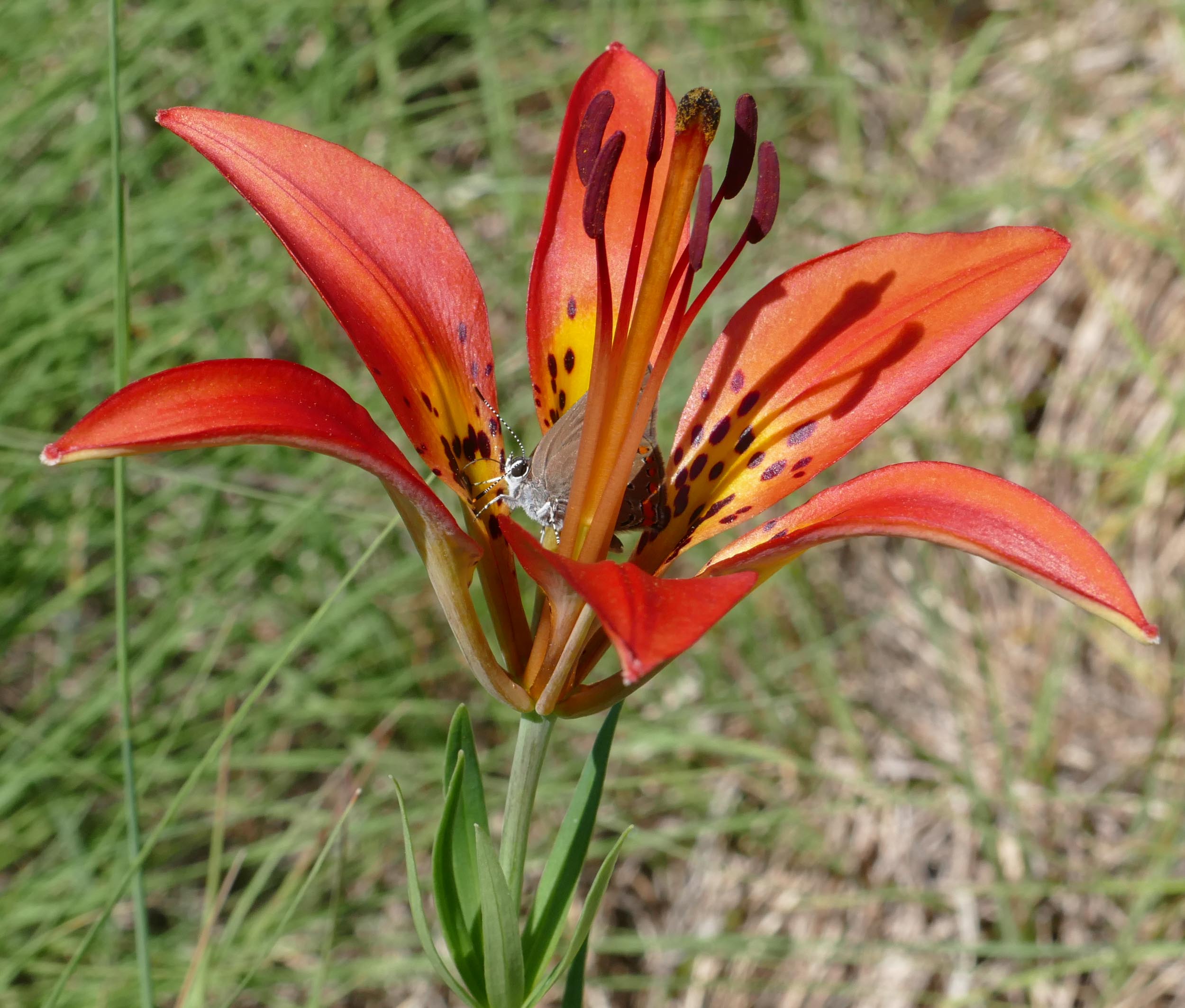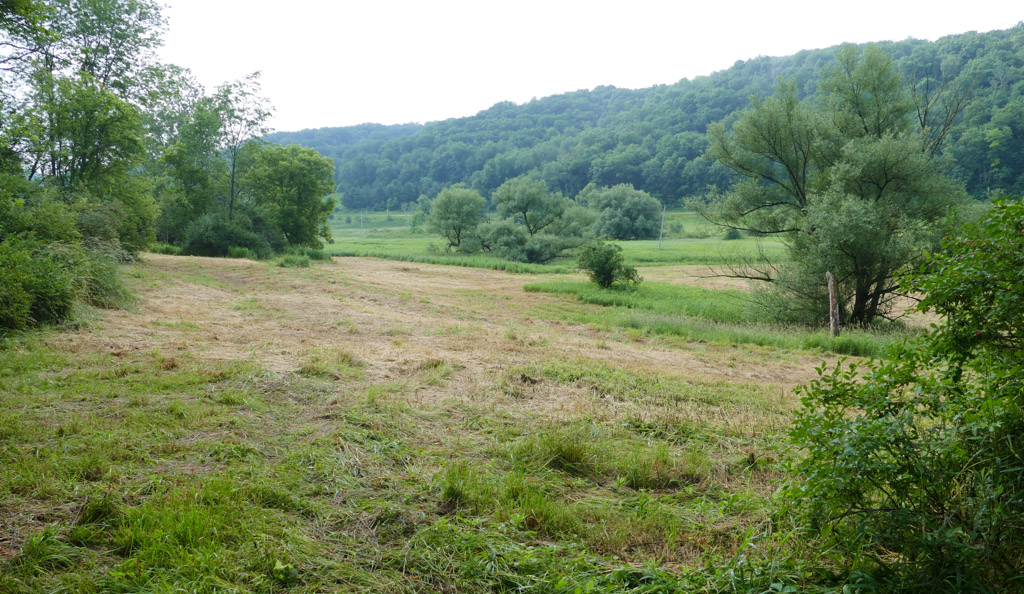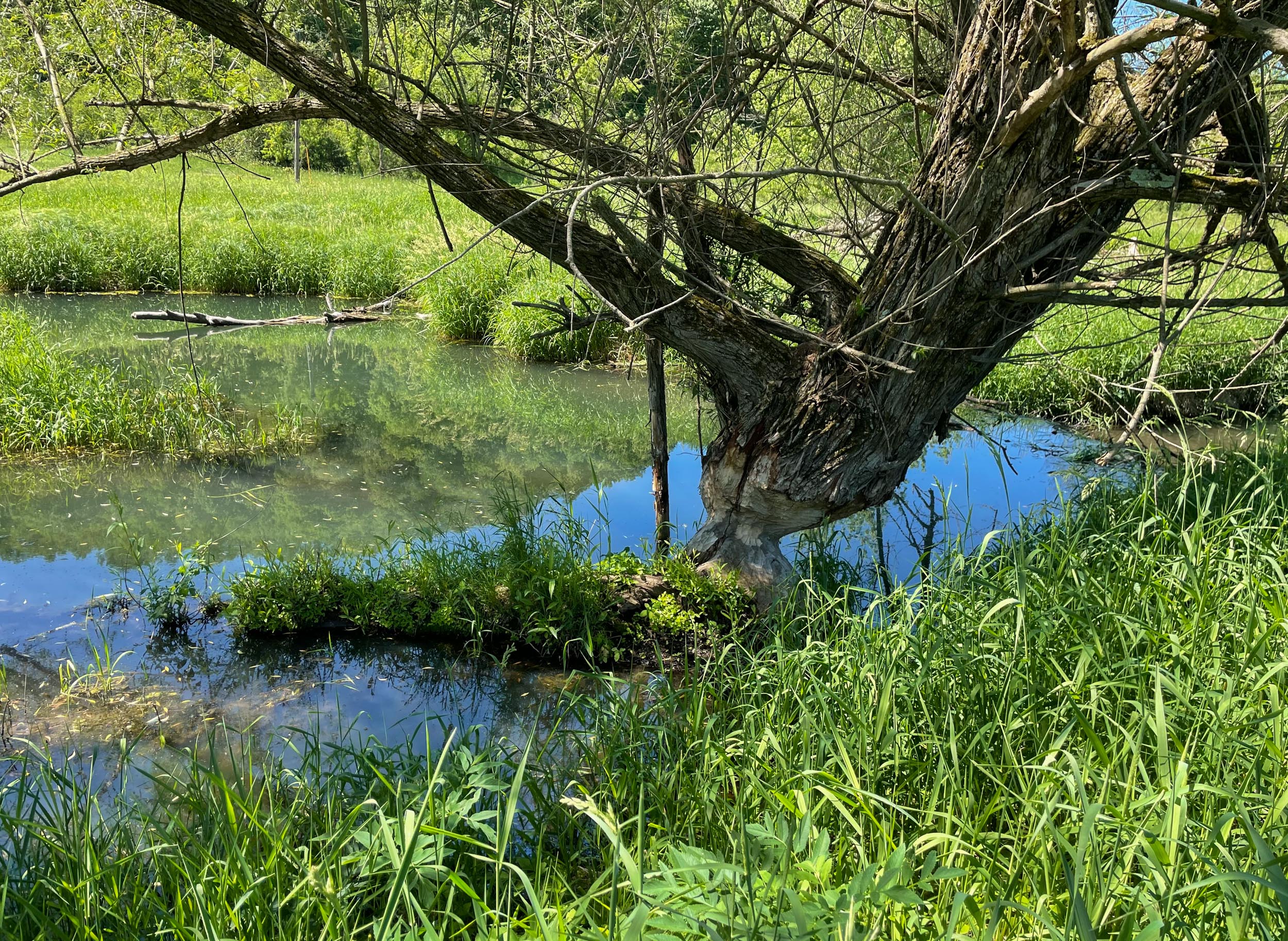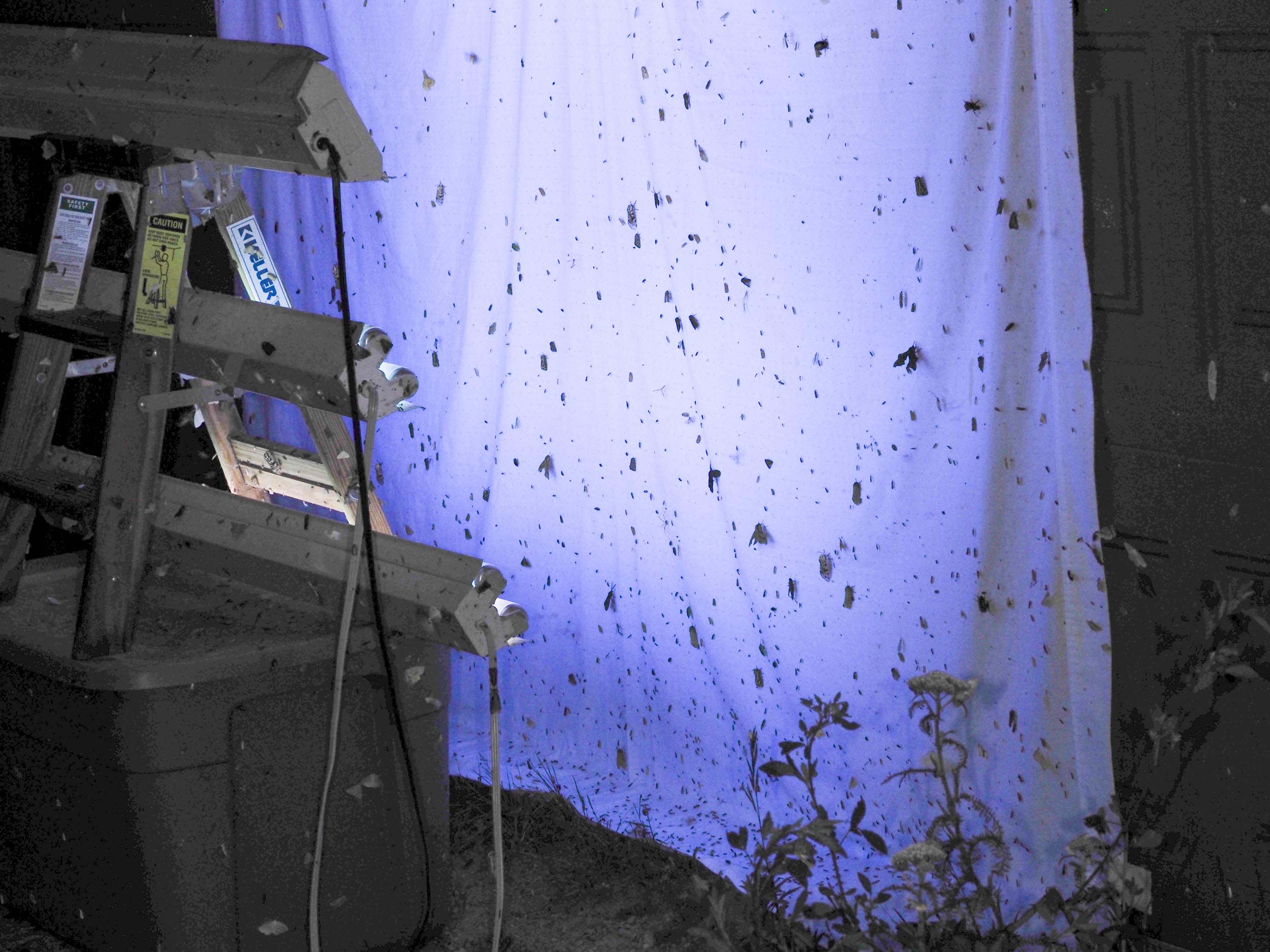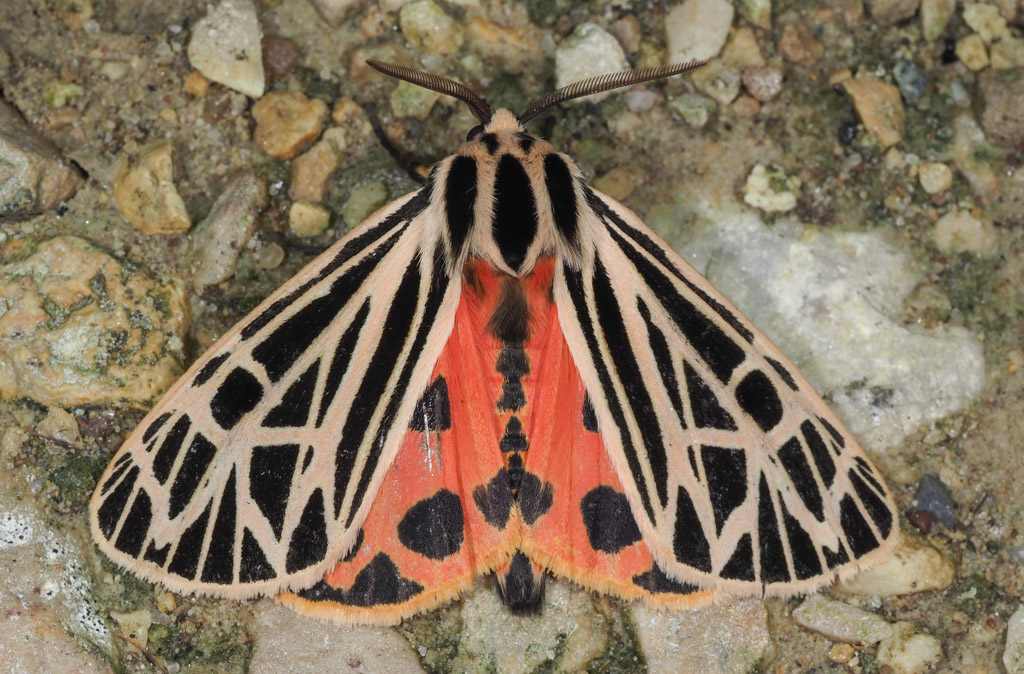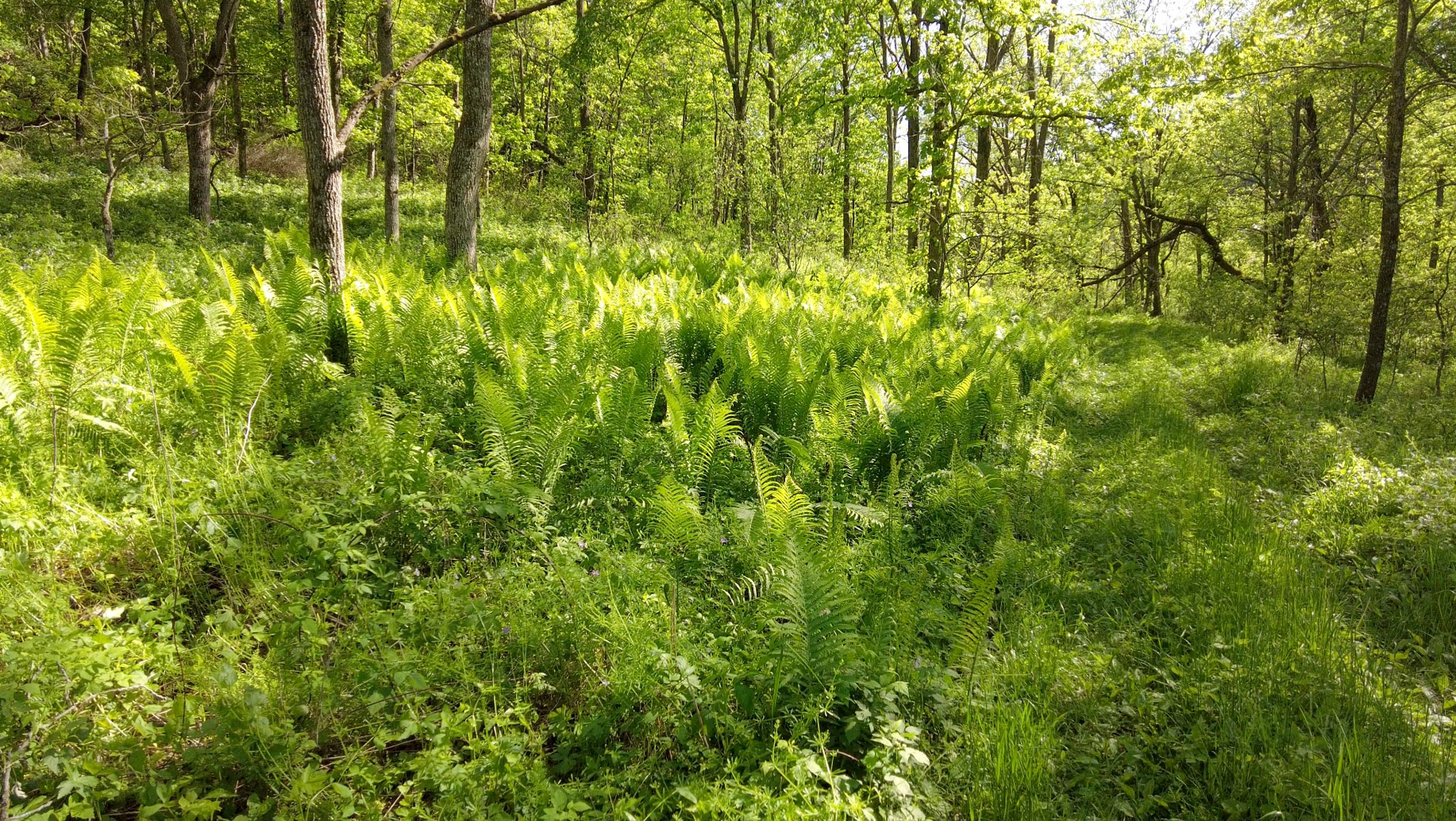This is the time of year we see butterflies everywhere – on the driveway, nectaring on flowers, and fluttering over prairies and through the trees.
Giant Swallowtail on Red Clover. Red clover has been prolific this year. It’s especially abundant in our fields that used to be pasture. Most years it disappears – hidden by the mass of other flowers, but this year there’s more of it than usual. It’s not native, but butterflies love to nectar on the flowers.
My favorite driveway butterfly – Baltimore Checkerspot. We see these butterflies all over the wetland, but it’s easiest to photograph them on the driveway where they’re busy collecting minerals to use in mating.
Baltimore Checkerspots lay their eggs in large groups on Turtlehead leaves (Chelone glabra).
Eyed Brown – common butterflies in the wetland
Common Milkweed is one of the best flowers to attract butterflies. Here are two Great Spangled Fritillaries on one flower cluster.
Several species of hairstreaks are flying now – they chase each other in tight little circles across the tops of the plants. This is a Banded Hairstreak – the most common species we see.
We don’t have much Spreading Dogbane, but there’s one small prairie opening that has dozens of plants. Butterflies love it – for the last month there have been dozens of Great Spangled Fritillaries and Silvery Checkerspots visiting the flowers constantly.
Great Spangled Fritillary and Silvery Checkerspot on Spreading Dogbane
Great Spangled Fritillary on Spreading Dogbane
I stopped at one of our clumps of Blue Flag Iris and found several skippers investigating the blossoms. This one is a Long Dash.
Long Dash – showing the tops of its wings
Hobomok Skipper on Iris
Here’s Mike’s June mini-video. This one is about how busy we all are in the early summer – plants, critters, people… all busy.
To see more of his movies and bio-acoustic adventures, check out his web page: EarsInTheDriftless
A few of our Wood Lilies bloomed this year. They’re very attractive to butterflies. This Coral Hairstreak scooted all the way around at the bottom of the flower – maybe searching for nectar.
Coral Hairstreak on Wood Lily
Most of our restoration work right now is concentrated on the wetland. The big projects there are controlling two aggressive invasives: Wild Parsnip and Reed Canary Grass.
Mike has been mowing Reed Canary Grass. We’ve discovered that if we mow it early in the summer, it slows it down enough that sedges have more of a chance. Mike has been taking photos of his mowing projects with the drone.
The area on the far side of the creek – between the creek and the road – we call ‘No Bridge Meadow’. We can’t drive there – it’s bordered by the creek on one side, and springs and sedge meadow on the other sides. I wade across the creek so I can pull the Wild Parsnip that grows there.
Here’s a view of me pulling parsnip, taken with the drone. It looks like I’m right next to a mowed area, but actually the creek runs between it and the place I’m working.
This is what used to be the yard between the old farm buildings. This area is normally very wet and full of Parsnip and Reed Canary Grass but also lots of sedges. This has been a dry year, so Mike was able to get in to mow, to hopefully encourage the sedges.
A few more drone pictures….
Part of the sedge meadow. It has that bumpy texture because the sedges form tussocks that can get to be 3 feet tall. The new leaves form at the top of the tussocks; as the older leaves dry and turn brown they build up at the base of the clump and form the tussock.
Looking in from the road to No Bridge Meadow and the creek beyond it, with Sumac Point in the background
A Red-tailed Hawk flew by below the drone
More of Mike’s mowing – on the other side of the driveway – near Willow Bend.
The beavers have built several large dams in Willow Bend.
They’ve been working even on some of the largest willows.
This is the season for babies – the birds have started bringing their babies to the feeders, and we’re seeing fawns in the prairies and on all the trail cameras.
Moth nights have been amazingly busy this month.
Here are a few favorites.
Olive Angle Shades
Small Heterocampa – a new one for me
Virgin Tiger Moth
Once-married Underwing (Names for many of the moths in this genus refer to marriage.)
Twisted Oak Savanna
Ostrich Ferns along Cabin Road
Mourning Doves waiting for a turn at the feeders
One of the best photos we’ve gotten of a coyote on one of the trail cameras. Usually they’re moving so fast that they look like a blur.
This is the place that we’re starting to call ‘The Glen’. It’s where we sit and watch birds that come to bathe in the stream. It’s a little quieter now than it was in the spring – maybe because the birds are still busy with babies.
Prairie Coreopsis on Indian Grass Point
Sunrise from the drone








